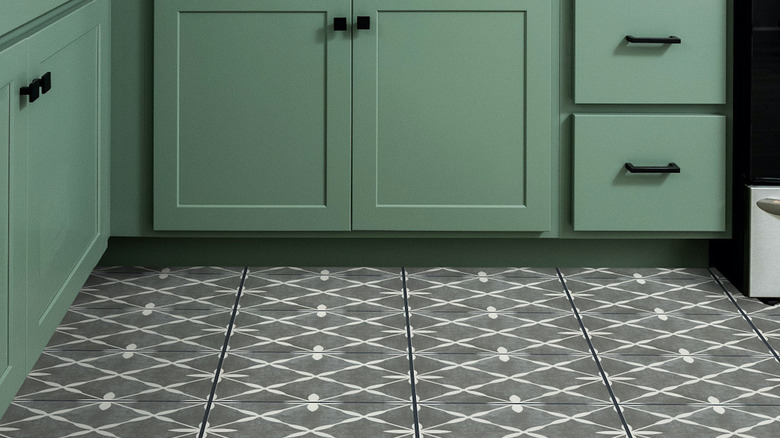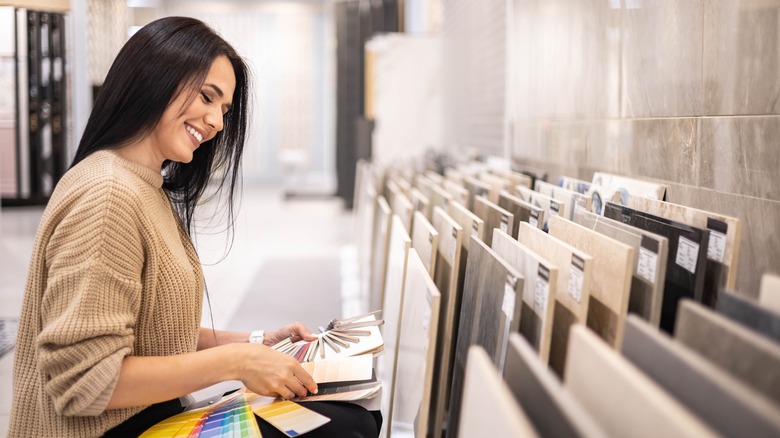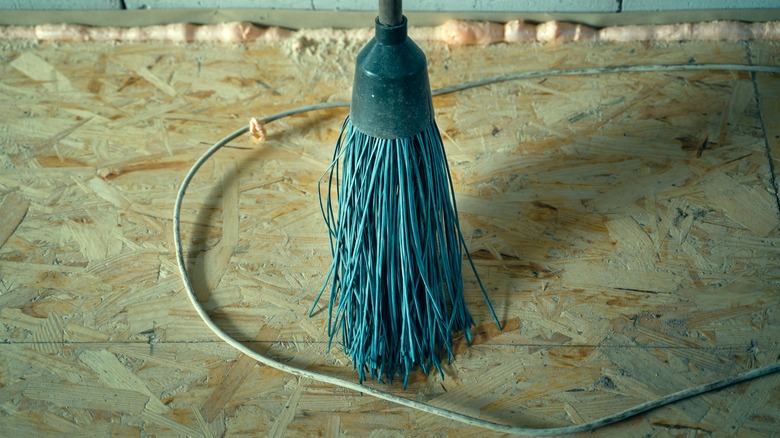Our Flooring Expert Reveals Everything You Need To Know Before Installing Handmade Floor Tiles
Handmade floor tiles are the perfect option if you want unique designs in your home. Some are hand-painted, creating intricate motifs. Others are unusually shaped, taking on the form of flowers or stars in a unique pattern. Using these artisanal tiles makes your space feel more curated, but there are some things to consider before tackling the project yourself. If you're prepared to pay a premium for your plates, you want to make sure the installation goes as smoothly as possible so it comes out as you imagined. We reached out to flooring expert Danielle Lancianese, the director of tile and stone at Shaw Floors, to figure out what you should be aware of before diving into your project.
Her first tip is to plan out the space before cutting or grouting anything. "Know your layout," she told House Digest in an exclusive talk. She added, "Consider where your cuts will be and plan accordingly. This will make the actual installation piece go smoothly." With proper planning, you won't create any awkward cuts in the middle of shapes or hand-painted designs. But that's just the tip of the iceberg. Below is everything you should consider before starting your tiling project.
Choose the material of your tiles carefully
If you want a perfect tile floor installation, narrow down your search to specific materials before you fall in love with a particular design. Limit your options to materials that are easy to cut and work with, especially if you plan to DIY the flooring yourself. You don't want to deal with a finicky tile that cracks or splinters every time you try to cut it with your wet saw. If you don't go this route, you might end up ruining a good amount of tile before getting the hang of it, which can cost you. So what should you focus on? "Ceramic is the easiest for a DIYer," Danielle Lancianese told House Digest in an exclusive interview. "Installers describe it as cutting butter compared to the other materials."
As for what to avoid, she recommends skipping any glass options. "From my experience, solid glass is the most difficult due to their fragility compared to other materials as well as the adhesive used for installing glass tiles," she explained. You need to choose an adhesive specifically made for glass tiles, or else they may crack or move after the installation process is finished and you begin walking on them. "Choosing the right adhesive can be challenging, especially for inexperienced installers," Lancianese warned.
Things to keep in mind while installing
Before installing your handmade tiles, make sure you prepare the subfloor before picking up a trowel. "Many people fail to ensure the subfloor or existing floor is clean, level, and free from debris, grease, or moisture," Danielle Lancianese told House Digest in our exclusive talk. "This step is necessary to avoid poor adhesion, uneven tiles, and premature damage." This will set you up for success and ensure the handmade tiles look as professionally installed as possible.
Lancianese also recommends back buttering the tiles before putting them on the floor so they're installed as firmly as possible. This is when you trowel adhesive to the back of the plate before placing it on the adhesive on the floor, creating extra grip. "Although not considered a requirement for porcelain or ceramic tiles, it is recommended for natural stone," Lancianese advised. "My rule of thumb is to do it on ALL compositions. I had an installer teach me this, and I wouldn't install tile any other way now! This ensures 100% mortar coverage, increasing the bond strength. Some look at this as an added step, but I look at it as added security." Follow these tips and you should have very little issue with your handmade selections!


